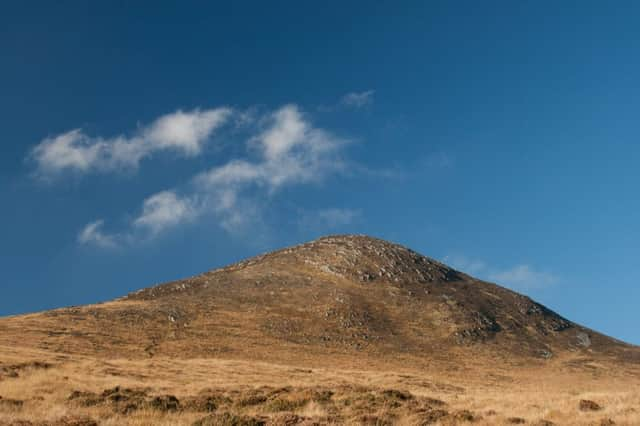Experts fight to prevent loss of rare Islay moss


It may be easily overlooked but Lindenberg’s featherwort is one of a community of globally rare oceanic bryophytes. It is found only on the highest mountain on the island of Islay, the southernmost of the Inner Hebrides, and in a single patch on neighbouring Jura.
Apart from a few scattered populations in Ireland, these two Scottish islands are the only places in Europe where the species grows because of the very specific set of conditions it needs to thrive.
Advertisement
Hide AdAdvertisement
Hide AdIts closest relatives live thousands of miles away on the other side of the world.
Experts are now racing against time in a bid to safeguard its continued existence.
Key threats come from increasing drought and flood conditions associated with climate change, as well as over-grazing, wildfires and nitrogen overdose caused by air pollution from traffic fumes generated in towns and cities far away.
Conservation charity Plantlife is working with scientists and locals on the islands, carrying out surveys and monitoring to gain greater insight into how the delicate plant is faring.
Alistair Whyte, head of Plantlife Scotland, said: “Lindenberg’s featherwort may seem insignificant on its own but it’s part of a much bigger picture and an almost unique ecosystem.
“We really want to raise awareness and let people know we have such a rare and enigmatic plant hiding unnoticed beneath our feet.
“Admittedly it will never draw the crowds of wildlife watchers that white-tailed eagles, ospreys or otters do, but liverworts have an important role to play in establishing stable conditions on our mountains, possibly reducing flooding and erosion.
“We also know that ecosystems with more species in them are more resilient and can withstand changes better. When seen as a component part of a fantastically diverse ecosystem, Lindenberg’s featherwort takes on a special importance, and we can’t honestly say what the effects would be of losing any one species from a complex system.”
Advertisement
Hide AdAdvertisement
Hide AdDr Neil Bell, a bryologist at the Royal Botanic Garden Edinburgh, is currently working on a project to sequence part of the genome of the species.
He said: “Lindenberg’s featherwort and the other bryophytes, which include mosses, help to counteract the impacts of climate change.
“They make up blanket bogs, which are massive carbon sinks and act like giant sponges, controlling the flow of water by soaking up rainfall and releasing it slowly down the glens.
“Lindenberg’s featherwort is part of a rare botanical asset that is important on a global scale due to Scotland’s almost unique climate conditions.
“We are currently sequencing its genome to find out which others it is most closely related to elsewhere in the southern hemisphere, how this very rare plant came to be in Europe and when it arrived.
“Understanding its genetics could also help in conservation of the species.”
The 491m-tall Beinn Bheigier, a popular destination for walkers, has been named as an Important Plant Area, but ecologists hope one day the Islay featherworts will receive legal protection as part of a Site of Special Scientific Interest.
“We really can’t afford to lose any more species through our actions,” said Whyte, “and if we can do something to look after a tough little liverwort that has made its home on a wet and windy mountaintop on the wrong side of the equator, then surely we should.”